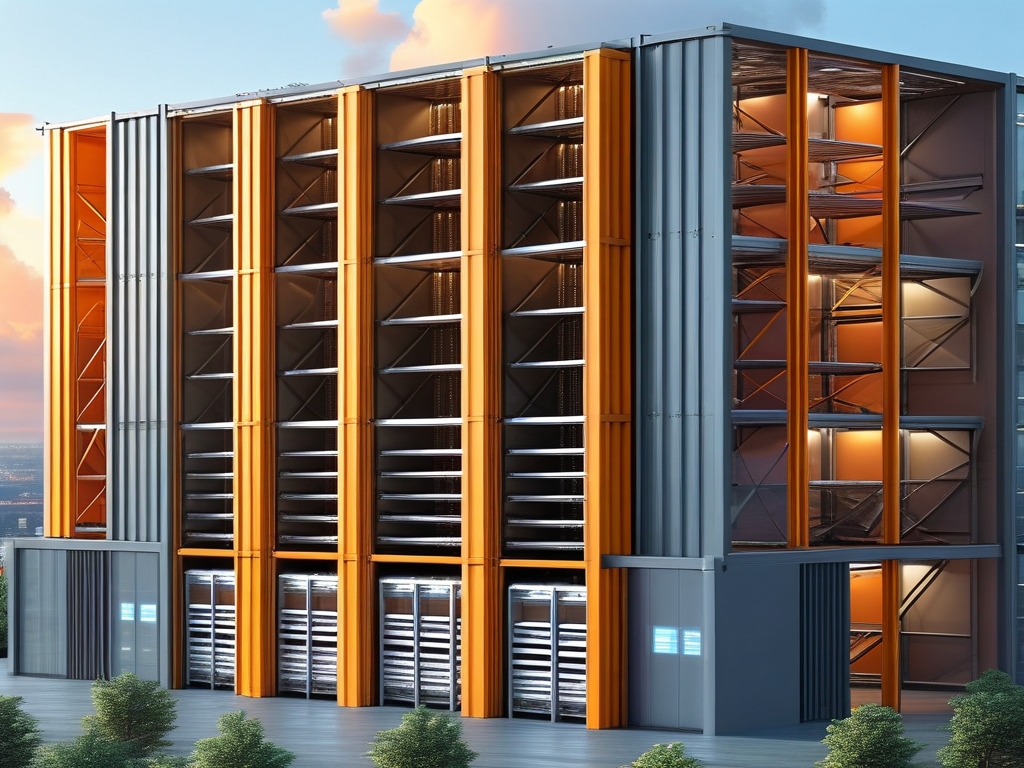In the rapidly evolving digital landscape, businesses and organizations are increasingly turning to hybrid cloud storage architectures to address the challenges of data scalability, security, and cost-efficiency. This innovative approach combines the flexibility of public cloud services with the control of on-premises or private cloud infrastructure, creating a unified system tailored to modern data demands. Below, we explore the components, benefits, challenges, and real-world applications of hybrid cloud storage architectures, with a focus on their role in shaping the future of data management.

Understanding Hybrid Cloud Storage Architecture
A hybrid cloud storage architecture integrates multiple storage environments—typically a mix of on-premises infrastructure, private cloud resources, and public cloud services—into a cohesive system. This setup allows organizations to dynamically allocate data based on performance requirements, compliance needs, and cost considerations. For instance, sensitive data might reside in a private cloud or on-premises servers, while less critical or bulk data is stored in cost-effective public cloud solutions like Amazon S3, Microsoft Azure, or Google Cloud.
A key feature of this architecture is its use of unified management tools, which provide a single pane of glass for monitoring and managing data across disparate environments. Advanced APIs and orchestration layers enable seamless data migration, automated tiering, and policy-driven storage optimization.
Why Hybrid Cloud Storage? Key Advantages
- Scalability and Flexibility: Organizations can scale storage resources up or down without significant upfront investments. Public cloud components handle sudden spikes in demand, while private infrastructure ensures stability for mission-critical operations.
- Cost Efficiency: By leveraging public cloud storage for non-sensitive data, businesses reduce capital expenditures (CapEx) on physical hardware. Pay-as-you-go models align costs with actual usage.
- Enhanced Security and Compliance: Sensitive data remains under organizational control in private environments, addressing regulatory requirements like GDPR or HIPAA. Encryption and access controls are consistently applied across all layers.
- Disaster Recovery and Redundancy: Hybrid setups enable robust backup strategies. Critical data replicated across geographically dispersed clouds ensures business continuity during outages or cyberattacks.
Architectural Components in Detail
A typical hybrid cloud storage system comprises the following elements:
- On-Premises Storage: Physical servers or Network-Attached Storage (NAS) devices for high-performance, low-latency access.
- Private Cloud: Virtualized storage resources hosted in a company’s data center or a third-party facility, offering greater control than public clouds.
- Public Cloud Services: Scalable object storage solutions like AWS Glacier for archival data or Azure Blob Storage for analytics workloads.
- Data Fabric Layer: Middleware that abstracts storage complexities, enabling seamless data movement and synchronization.
- Security Gateways: Tools for encrypting data in transit and at rest, along with identity and access management (IAM) systems.
Challenges and Mitigation Strategies
While hybrid architectures offer compelling benefits, they also introduce complexities:
- Data Silos and Integration Hurdles: Disparate systems may lead to fragmented data visibility. Solution: Invest in interoperable APIs and standardized data formats.
- Latency Issues: Retrieving data from public clouds can slow down applications. Solution: Implement edge caching or tiered storage policies.
- Compliance Risks: Mismanaged data placement may violate regulations. Solution: Deploy automated tagging and classification tools.
- Cost Overruns: Unmonitored public cloud usage can inflate expenses. Solution: Adopt FinOps practices to track and optimize spending.
Real-World Applications
- Healthcare: Hospitals use hybrid architectures to store patient records securely on-premises while leveraging the cloud for AI-driven diagnostic imaging analysis.
- Media and Entertainment: Streaming platforms keep frequently accessed content in edge locations for low-latency delivery, while archival footage resides in cold storage clouds.
- Financial Services: Banks balance compliance needs by processing transactions on private infrastructure and using public clouds for big data analytics.
The Role of AI and Automation
Emerging technologies are enhancing hybrid cloud storage capabilities. Machine learning algorithms predict data access patterns, automating tiering decisions. For example, rarely accessed files are automatically moved to cheaper storage tiers. AI-driven security tools also detect anomalies in real time, mitigating breaches.

Future Trends
- Edge Computing Integration: As IoT devices proliferate, hybrid architectures will extend to edge nodes, reducing latency for time-sensitive applications.
- Unified Compliance Frameworks: Cross-cloud compliance tools will simplify adherence to global regulations.
- Green Storage Initiatives: Energy-efficient hybrid models will prioritize sustainability by optimizing data placement based on carbon footprints.
Hybrid cloud storage architecture is not just a trend but a necessity in an era defined by exponential data growth and evolving security threats. By blending the best of on-premises control and cloud scalability, organizations achieve a future-proof data strategy. As technologies like AI and edge computing mature, hybrid models will continue to evolve, offering smarter, faster, and more sustainable solutions for enterprises worldwide.
For businesses considering this approach, the key lies in careful planning: assess workload requirements, prioritize interoperability, and invest in management tools that unify visibility across the entire storage ecosystem. The hybrid cloud is here to stay—and it’s reshaping how we think about data forever.






